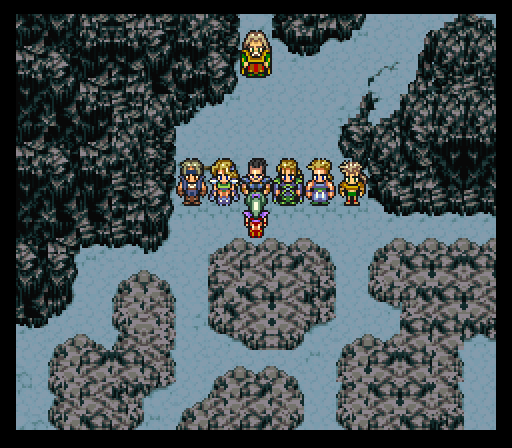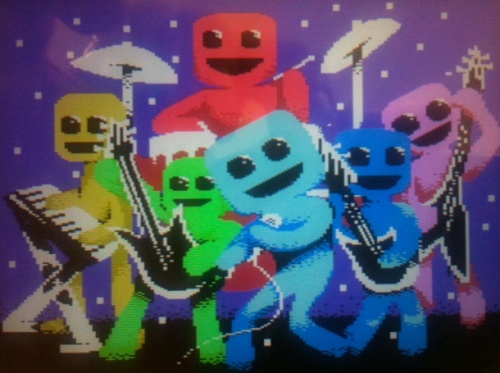I’ve been very, very slowly chipping away at Final Fantasy VI. Or, I suppose it’s Final Fantasy III because I’m playing the Virtual Console edition. But all that aside, I started playing this in February. From what I’ve read about it over the years, FFVI should not take 5+ months to complete.
The problem is that I cannot seem to remember that it’s there. Every time I pick it up and start playing again, it sems that a new game comes around to distract my attention from it. And this isn’t the first time I’ve had this issue either! I’ve tried playing it (admittedly the highly illegal ROM of it) a couple times before, and the farthest I’ve ever made it was to the ghost train. I know this for a fact because I haven’t got even the slightest recollection of Terra or Locke’s paths from the point where the party splits following the battle with Ultros.
I’ve finally progressed beyound that point though, and I’ve just arrived at whatever the town is where you can learn a little bit about Locke’s past. I probably should have remembered that one town’s name too, because Locke has always been my favourite FFVI character, even though I’ve never really played the game. That opinion is based almost completely from Nintendo Power’s coverage of the game. It’s funny, Epic Center was always my favourite NP feature, but I never played any SNES RPGs during their time. I was always afraid of games I wouldn’t be able to beat in one rental.
Before I move on, Locke is still my favourite character. “It’s a little tight, but the price was right!”
Anyway, I was a little distraught at the event battle just before this part of the game, where you have to defend a hill against a force of encroaching troops. FFVI up until that point wasn’t a tough game. I kept a big stack of potions on hand, and just chugged those as I brute-forced my way through anything that posed a threat. But this battle was different.

There’s a part that plays out the same near the beginning of the game, where you’re on a map that’s made up of a small maze. Your party is at the top, the enemy below. You get three groups of characters to move around while trying to stop the baddies reaching your side. The first instance of this is pretty easy. There aren’t a lot of bad guys, and it’s the beginning fo the game; of course they wouldn’t make it very hard. Only the second time around, you’re squaring off against a regiment of soldiers led by Kefka, who (SPOILERS) ends up being the main antagonist of the game.
It became clear very quickly that my parties were painfully underleveled. I had never stopped to grind in this playthrough yet, and while I still had a good supply of potions and tonics, the soldiers were doing a pretty good job of carving up my two-person squads. (There was one squad with three characters, but they only saw a single fight). In the end I got screwed because one party was constantly barraged by enemies, and since you can only move one squad at a time, your control is frozen as the camera pans over to any inactive parties that are besieged by enemies. Because of this, I was only able to move my backup squad at the top about one step between each battle, while the enemy party that was near the top was able to slide on in at two steps between fights. It was stupid, and a waste of like twenty minutes.
On my second time around, I tried something competely different. I stuck Terra and Sabin together, and sat my other two squads at the two choke points at the top of the map to intercept any incoming enemies. With Terra and Sabin, I beelined directly for Kefka. On the way they were accosted by at least seven enemy squads, which I cut down handily by spamming Sabin’s Aurabolt. Terra doled out poitions when necessary, and I FireDanced my way past the Rider at the bottom. I proceeded to continually blast Kefka with Aurabolt and he retreated before I knew it. I think only one enemy squad made it to the top before it was over.
I’m now starting to wonder if it’s a trait exclusive to FFVI, or if more FF games become a cakewalk if you just plow through them with a sack full of potions. I’m wondering if the rest of the game is like this too, or if I’m eventually going to have to put some thought into it. I’m sure that I haven’t seen the last of the gimmick bosses, but aside from that, is brute force the best way to get through all the mooks? I guess we’ll have to wait and see. I think at this pace I should be done by about this time two years from now.


